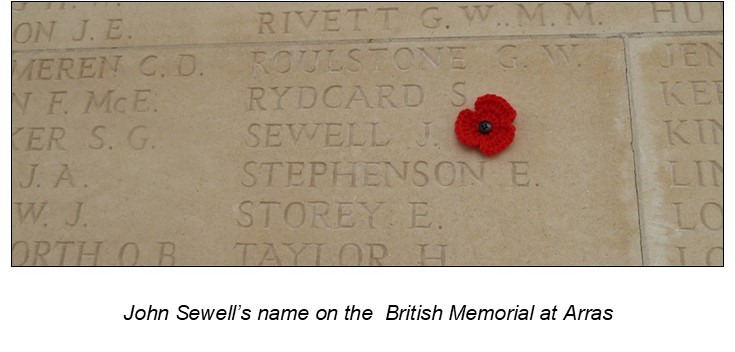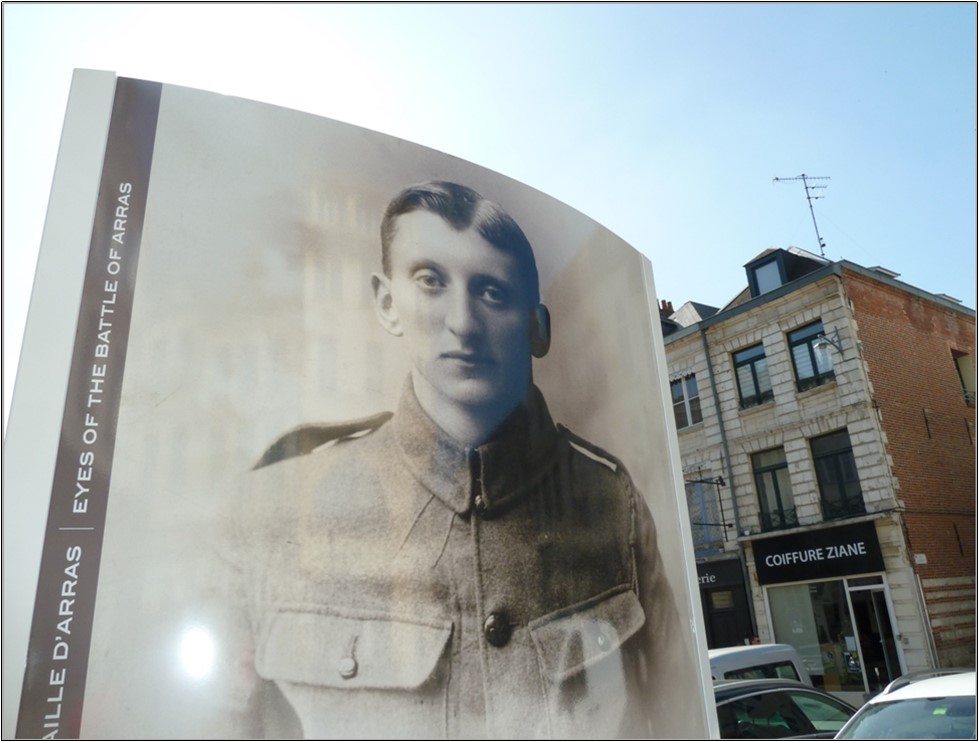By Helen Cramp
This article was published in the August 2017 edition of Soul Search, the Journal of The Sole Society
Ed: this article concerns John Sewell, the brother of Henry who is the subject of the previous article. John fought and died at the battle of Arras.
John Sewell was born in 1891, and lived at 9 Fenwicks Row, Boldon Colliery with his parents, Henry and Mary (nee Carson) Sewell. He married Lucy Fickles on 20th December 1912 at St Michael’s church in the parish of South Westoe and they had a daughter, Lucy, on 21st June 1913.
During the First World War John Sewell was a sergeant in the Durham Light Infantry. He was in the 112th Company Machine Gun Corps (Infantry) and his service number was 6093. He is remembered on the British Memorial at Arras.

On the Wellington Tunnels Museum website (Carrière Wellington, Arras, northern France) which I found quite by accident, was the request for people to submit a photo and details of anyone involved in the fighting at Arras in any way to be part of an exhibition in memory of the battle entitled The Eyes of the Battle of Arras – an outdoor display around the city centre. I thought I was too late in submitting the material about my great uncle John Sewell as I had to confirm his details with GRO certificates. However he was selected to be part of the exhibition.
To celebrate the exhibition, over 50 relatives from all over the world attended a function at Saint Vaast Abbey. We were divided into three groups and taken for a walk around the streets of Arras to see our relative and to talk about him/her to the others in the group. Around the streets of Arras were positioned 60 display boards/cases, life-sized photos with the stories of 120 people. The majority of the information was provided by visitors to the Wellington Tunnels Museum. A whole variety of people involved in the battle were on display, including a nursing sister from New Zealand, a German pilot and an Indian soldier. Under John Sewell’s photo the Wellington Tunnels Museum staff had written the following;
John’s machine gun company was quartered in the London cave a few days before the start of the Battle of Arras. This was part of the Saint-Sauveur sector, a complex of quarries located beneath the Cambrai road, developed and adapted by the British tunnellers of the 9th and 35th Divisions to accommodate approximately 2,000 men. On 9th April at 07.00 hours, John’s unit emerged from the underground shelter in support of the infantry attack along the Cambrai road. On 11th April, he was blown up by a German shell during the attack on Guemappe. With no resting place, he is one of 30,000 men who went missing in action in the Battle of Arras. To honour their memory, their names are engraved on the Arras Memorial.

My visit to Arras was very moving and came about really by chance: as I was researching my grandfather, John’s brother, Henry Sewell, I was sidetracked, never thinking it would take me all the way to France!
You can read more about The Eyes of the Battle of Arras at:
www.regardsdesoldats.com
